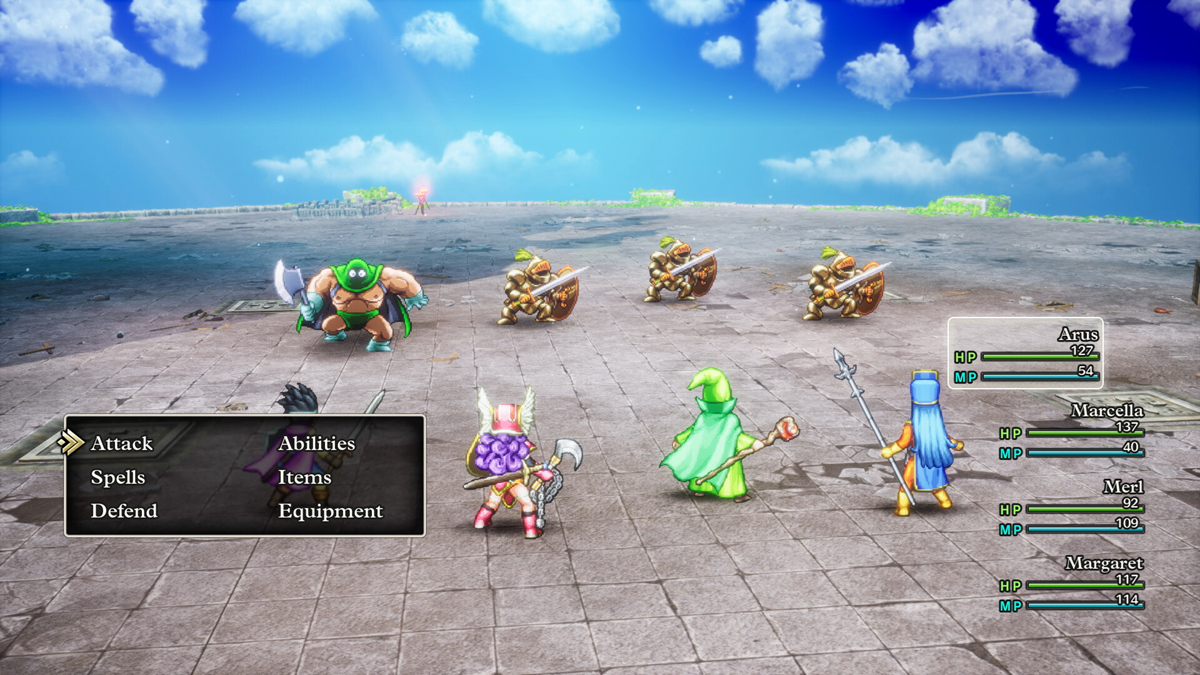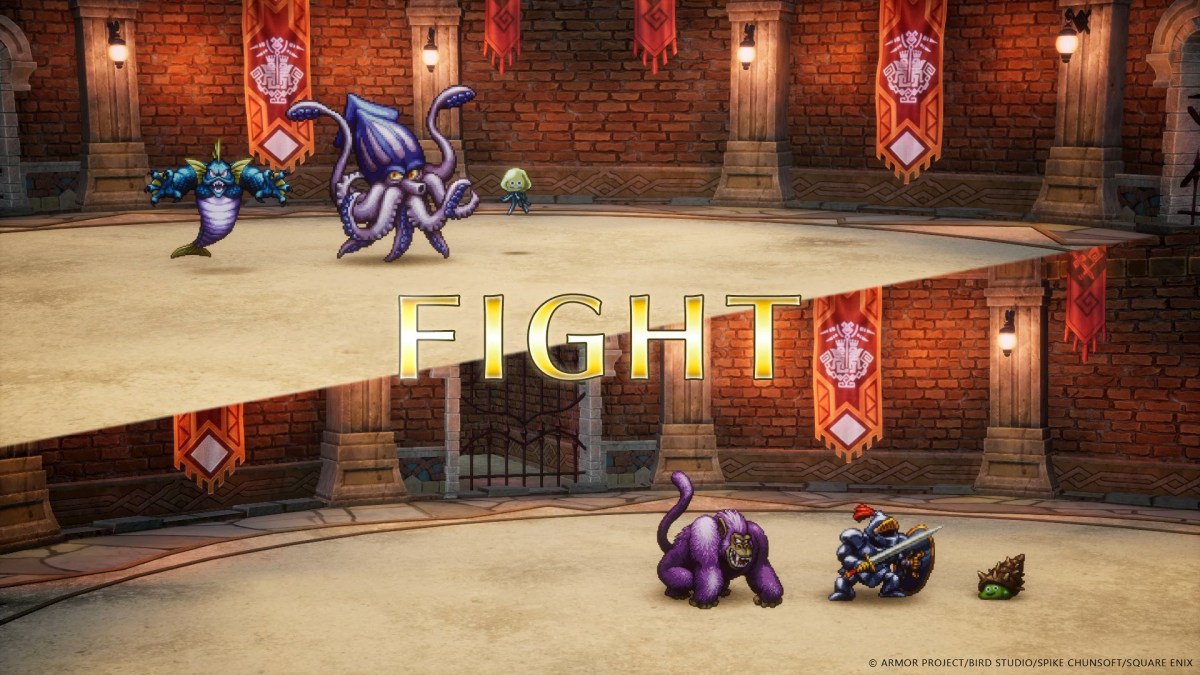When it comes to the Dragon Quest series, Square Enix is no stranger to Dragon Quest III remakes. The NES game ended up being remade for the Super Famicom. That version inspired a Game Boy Color release. Then there was the mobile adaptation, which showed up worldwide. With Dragon Quest III HD-2D Remake, we’re getting yet another take with a whole new graphical approach and even more original content than in past games. To learn more about its development and additions, Siliconera spoke with Producer Masaaki Hayasaka about the project.
Jenni Lada: What was it like to work on Dragon Quest III HD-2D Remake after working on Octopath Traveler? How did your experience on it shape your approach to Dragon Quest?
Masaaki Hayasaka: I observed how HD-2D games are created and refined through Octopath Traveler up-close, so I didn’t have trouble regarding the sensibility of what we needed to accomplish to create an HD-2D game as it was ingrained in my body. On the other hand, the previous HD-2D games tended to have chic color palettes and atmospheres that were more reminiscent of the old Square games, but this time we had to craft a vivid, colorful atmosphere that felt true to Dragon Quest.
[Tomoya] Asano-san also gave us an incredibly ambitious marching order to surpass our past HD-2D titles, so we deliberately decided to avoid competing with those titles, and instead aimed to tackle HD-2D games from a different direction altogether. The fact that the final game doesn’t utilize any pixel art in the background (apart from the monsters and characters) is a perfect example of this.
I also drew on my experience as the sound director for Octopath Traveler and put considerable effort behind the sound-related aspects of this game. I was very particular about every single ambient noise, battle sounds, and even the monsters’ cries.

When work on the project started, how did more recent HD-2D technologies from games like Octopath Traveler II affect Dragon Quest III HD-2D development?
Hayasaka: People often misunderstand this, but there’s no such a thing as “HD-2D technology” or an “HD-2D engine”. HD-2D games are quite simple when you actually break them down: all you do is place pixel-based characters onto 3D backgrounds and apply effects that make them look good.
From there, the development teams for each respective title build the rest of the game through their own unique lens, and that’s where you start to see the distinct characteristics of each title emerge. In the case of our Dragon Quest III remake, we deliberately wanted to differentiate the game from our previous HD-2D titles, so we tried not to reference them too much (including the most recent Octopath Traveler II) aside from the quintessential HD-2D elements that we felt were necessary to include at minimum. It’s my belief that being influenced by something means gradually moving towards it.
We’ve seen a resurgence in reviving classic Dragon Quest storylines with new approaches such as with Dragon Quest Monsters: The Dark Prince and Dragon Quest Builders. How did work on those open up possibilities for the new Ortega storyline in Dragon Quest III HD-2D?
Hayasaka: To be honest, we didn’t really reference those titles. The following is solely an example to give you an idea of what I mean, but those two titles were created to develop a new story as an extension of the original one.
On the other hand, we aimed to remake the original story without disrupting its flow as much as possible. The additional Ortega episode also fits within this scope of adding a little extra content to the original game. In that sense, our approach towards creating these games was vastly different, and we explored and defined our best approach using the original story as our biggest reference.
How did the team use the original Dragon Quest III and its development resources to create the Ortega storyline?
Hayasaka: I didn’t really do anything special for this, either. If I had to say, all I did was receive its text data, play the original game, and do some research. The decision to add the Ortega episode came from my hunch that adding this content would make our players the happiest. I believe the most correct thing to do is to simply play the game and try to think about things from the player’s perspective, and I suppose that’s not something that you can do by tinkering around with resources from the original game.
Square Enix released a video directly comparing the original game to Dragon Quest III HD-2D and how closely one resembles to the other. What sorts of resources did the team have access to when working on the remake and how influential were on the design?
Hayasaka: Our intention was to recreate the feeling and playability of the original game as much as possible, so we used any program resources and data tables that we could. The damage values of the monsters would be an example that’s easy to understand. If there’s a discrepancy with what you remember that drives you to ask yourself, “Did this monster really deal this much damage?” That would feel odd, right? We used the values from the original as a general baseline to try to avoid that feeling. Even then, we adjusted the balance accordingly because there are various new elements added to this game, so not everything is exactly the same as the original.

How did past Dragon Quest games and Dragon Quest Monsters spin-offs influence the new Monster Wrangler job and monster arena in Dragon Quest III HD-2D?
Hayasaka: If you’re familiar with the Dragon Quest series, you’ve probably noticed that the Monster Wrangler vocation has been pulled directly from Dragon Quest VI and Dragon Quest X, and that the Monster Arena is pulled directly from Dragon Quest VIII. If you’re looking to add new elements without disrupting the world of Dragon Quest, I think it’s best to reference existing Dragon Quest titles.
I think the Monster Arena—which was added by renewing the monster arena from the original game—is the easiest to understand. It’s similar to the monster arena from the original game, and when I was thinking about whether there was any other fun gameplay from other games within the DQ series, the first thing that came to mind was the Monster Arena.
How did you determine which monsters would be picked for the arena?
Hayasaka: The first consideration would be based on balance, and the second on fit. Gameplay based on rescuing and befriending monsters has appeared in various forms throughout the Dragon Quest series, and many monsters have become famous because of them. So, we selected which monsters would appear in a way that didn’t undermine the sensibility of a DQ fan. The names of the rescued monsters are a great example of this.
Which Dragon Quest III HD-2D party composition do you personally use, and why?
Hayasaka: I’m sorry because I realize this isn’t very interesting, but when choosing anything, I always prefer whatever is recommended, standard, and default. Because of this, my party composition is the hero, warrior, priest, and mage, haha. In fact, I played through the game with this party composition every time I had to check the most standard game balance during our test plays. Now, I’m completely attached to it.
With Dragon Quest III HD-2D getting this renewed release and the past two Dragon Quest Builders games being tied to the original two titles, how would you feel about a Dragon Quest Builders 3 that ties into this entry for its lore?
Hayasaka: The Dragon Quest Builders series has a strong fan base and is still popular, but unfortunately, we have no information we can share at this time.
Dragon Quest III HD-2D Remake will be released on PCs via Steam, Nintendo Switch, PlayStation 5, and Microsoft Xbox Series X/S on November 14th, 2024.


Published: Nov 5, 2024 09:00 am